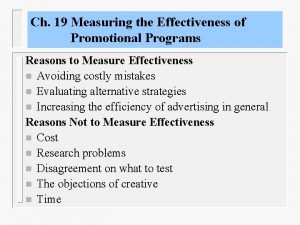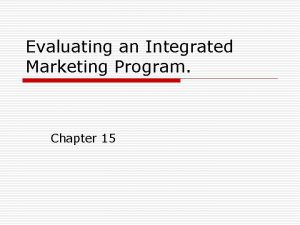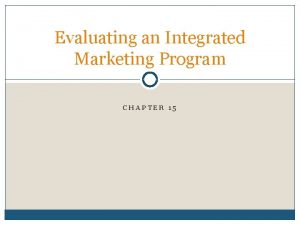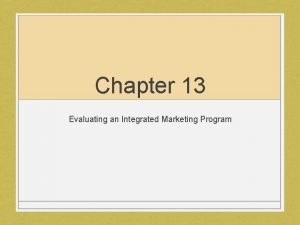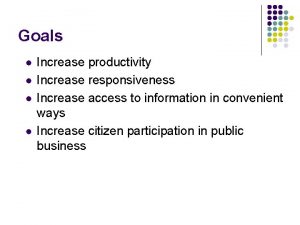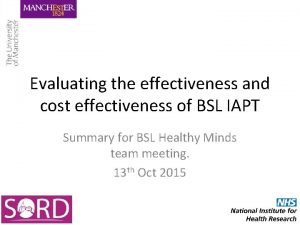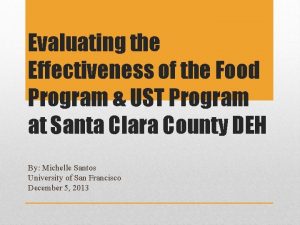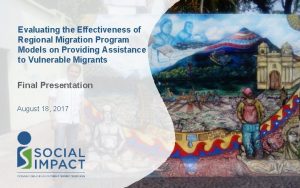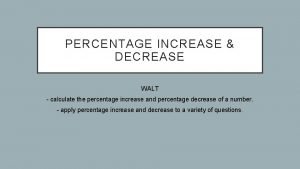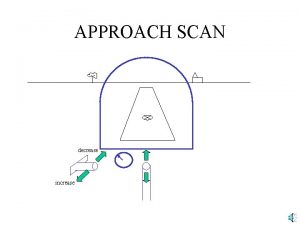Evaluating the Effectiveness of a Program to Increase















- Slides: 15

Evaluating the Effectiveness of a Program to Increase Zinc Use for Treating Diarrhea in Nepal Authors Lonna Shafritz, AED Prakash Dev Pant, AED Peter Oyloe, AED This poster is made possible by the support of the American people through the United States Agency for International Development (USAID). The contents of this poster do not necessarily reflect the views of USAID or the United States Government. The authors acknowledge the support of Mr. Pangday Yonzone, Program Specialist, USAID/Nepal.

Country context • Population: 25 million/per capita income $240 • Under 5 mortality is 61/1, 000 live births* • Diarrhea: major cause of child mortality – 4 th for children < 5 years – 2 nd for children 12 -59 months • 66% of diarrhea cases treated • 27% treated by health provider – 61% used Oral Rehydration Solution/Therapy (ORS/ORT) – 68% used pills/syrups – 0. 6% used Zinc * Source: Nepal Demographic and Health Survey, 2006

Social marketing campaign – June to October 2009 Objective: Increase availability and use of Baby Zinc to reduce severity of diarrhea in children under 5, while maintaining use of ORS to avoid dehydration. Campaign promoted “zinc with ORS”. Interventions: Mass media - 5 languages • 3418 TV ads; 14, 622 radio ads Promotion through health providers • 3009 providers trained/ 2500+ job aids • 8000 Point of purchase materials Community-level activities • 5030 mothers of children <5 reached Private sector increased supply and number of brands of zinc

Evaluation methodology • Post campaign: random household survey–Dec 2009 – knowledge, attitudes and practices (KAP) – 2300 households in the 27 program districts • Compared to pre-intervention study – Sept 2008 – Same methodology and sample size; same research firm – Compared pre-post data only in 13 overlapping districts • Oversampled in post to increase number of children with diarrhea in last 2 weeks (less than 7% of random sample), to maximize efficiency and minimize costs • Also analyzed post data by comparing: – zinc usage behavior by exposure to campaign – attitudes toward zinc by recent use of zinc for diarrhea

Background Characteristics Background characteristics of caregivers in the 2008 and 2009 studies are similar 100 86 83 Percentage 80 65 64 60 40 37 35 37 36 45 44 35 37 20 39 41 12 7 0 Age below 24 25 -29 Not educated Hindu Pre-campaign 2008 (n=2, 107) Listen to Watch TV Read Low SES radio daily newspaper/ magazine daily Post-campaign 2009 (n=2, 070)

Percentage of children with diarrhea in preceding two weeks No difference in diarrhea prevalence was observed 10 Percentage 8 6 6, 7 5, 5 4 2 0 Pre-campaign 2008 (n=2, 449) Post-campaign 2009 (n=2, 358)

Treatment practices among caregivers with children having diarrhea in last 2 weeks Total use of zinc as well as zinc with Oral Rehydration Solution (ORS) increased; however, total use of ORS decreased (all at p<0. 05) 80 71 60 51 40 20 59 49 25 17 22 14 21 16 13 8 12 16 3 3 1 2 Pre-campaign 2008 (n=134) ad i Post-campaign 2009 (n=158) er s O th al tidi Tr An tio na lt he ar rh oe ra p y ic tib An d ar e re p -p e om H io t id flu ps pi lls /s th er O Zi nc an d O yr u R S nc Zi R S 0 O Percentage 100

Impact of campaign on knowledge and usage – post only Almost all (96%) of total respondents reported exposure to a baby zinc message, with 84% reporting exposure to specific campaign messages 100 Percentage 80 96 84 62 60 40 20 0 n=2070 Exposed to baby zinc Exposed to any Exposed to campaign messages tagline

Impact of media exposure on zinc Usage Exposure to campaign messages had a significant (p<0. 05) impact on zinc usage and knowledge, among those with <5 child with diarrhea in prior 2 weeks. Percentage 100 80 68 55 60 40 41 29 25 20 11 32 11 0 Use of zinc for diarrhoea Use zinc for 10 Used zinc along days with ORS Exposed (n=77) Correct use of zinc Not exposed (n=102) Correct use definition: “knows that a child should be given zinc continuously for 10 days”

Those who used Baby Zinc to treat diarrhea are significantly more positive about its effectiveness Among those treating diarrhea in last 2 weeks with zinc (n=45) Among those NOT treating diarrhea in last two weeks with zinc (n=134) Baby Zinc is effective for treating diarrhea 96% 23% Baby Zinc reduces the duration of diarrhea 87% 18% Baby Zinc reduces the risk of new diarrheal episode in the following 2 -3 months 67% 11% Baby Zinc is the most appropriate treatment for diarrhea 91% 25% Baby Zinc with ORS/ORT should be used for every type of diarrhea 73% 15% Baby zinc reduces the risk of dehydration in children 69% 11% Baby zinc helps strengthen the immune system 64% 13% * All of the beliefs are significantly higher (p<0. 05) for zinc users than for non-users; Respondents from all 27 districts

Almost half of the zinc used was acquired from private pharmacies, a significant increase from pre-campaign 48 Percentage 50 40 30 30 26 25 20 9 10 13 13 17 3 0 Private Pharmacy Health post/ Sub-health post Pre-campaign (n=134) Hospital Female Private Community clinic/Nursing Health home Volunteers Post-campaign (n=158)

Baby Zinc users are significantly more likely than non-users to believe the product is easily available and to be willing to pay the current price Availability Affordability Among those treating diarrhea in last 2 weeks with zinc (n=45) Among those NOT treating diarrhea in last two weeks with zinc (n=134) Shops nearby always have baby zinc 87% 23% There is a place nearby where I can get baby zinc when my child needs it 93% 23% Baby zinc is available within walking distance of my home 93% 25% I am willing to pay the current price for Baby zinc 60% 13% * All of the beliefs are significantly higher (p<0. 05) for zinc users than for non-users; Respondents from all 27 districts

Summary of program results • Zinc usage among caregivers of children under 5 years increased in Nepal – Could decline in other pills/syrups use be due to zinc increase? • Caregivers exposed to campaign messages are more likely to use zinc (and zinc with ORS) than those not exposed • Baby Zinc users are significantly more positive than non-users about Baby Zinc’s – Effectiveness – Availability – Affordability • Private pharmacies – main source of zinc supply

Summary Evaluation Methodology • A well-designed post-implementation survey can be used as an endline o If a pre-implementation study can be found, the districts overlap, and the methodology can be duplicated • Oversampling of households with children <5 with diarrhea in last 2 weeks was effective at maximizing efficiency o Permitted determination of significant differences between pre and post, user and non-user, and exposed vs. not exposed, at low cost • These study results indicate that it can be difficult to maintain high levels of a current practice (ORS) when promoting a new one (zinc) for the same illness/symptom

For More Information Contact • Dr. Prakash Dev Pant: nepal 51@gmail. com • Lonna Shafritz: lshafrit@yahoo. com
 Measuring the effectiveness of the promotional program
Measuring the effectiveness of the promotional program Evaluating an integrated marketing program
Evaluating an integrated marketing program Evaluating an integrated marketing program
Evaluating an integrated marketing program Evaluating an integrated marketing program
Evaluating an integrated marketing program Evaluating an integrated marketing program
Evaluating an integrated marketing program Hát kết hợp bộ gõ cơ thể
Hát kết hợp bộ gõ cơ thể Ng-html
Ng-html Bổ thể
Bổ thể Tỉ lệ cơ thể trẻ em
Tỉ lệ cơ thể trẻ em Chó sói
Chó sói Glasgow thang điểm
Glasgow thang điểm Bài hát chúa yêu trần thế alleluia
Bài hát chúa yêu trần thế alleluia Môn thể thao bắt đầu bằng từ chạy
Môn thể thao bắt đầu bằng từ chạy Thế nào là hệ số cao nhất
Thế nào là hệ số cao nhất Các châu lục và đại dương trên thế giới
Các châu lục và đại dương trên thế giới Công của trọng lực
Công của trọng lực
